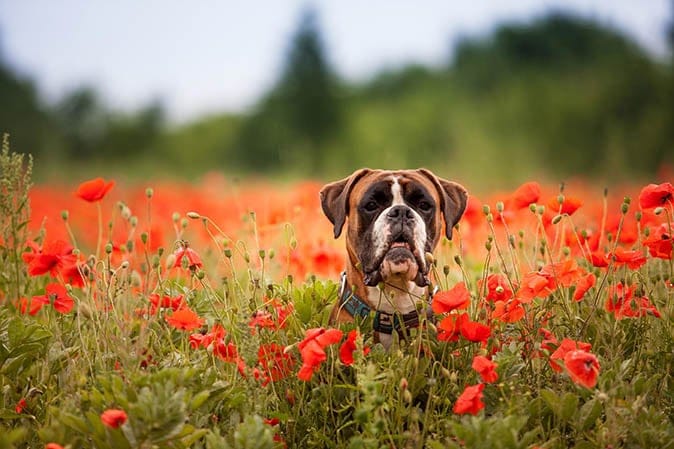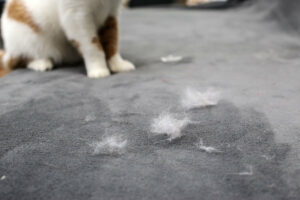Even though we’re in the throws of winter, spring will be upon us sooner than you know it. And spring always brings tons of fresh flowers that are so beautiful to enjoy. It’s an Instagramer’s dream season besides autumn.
But what we have to remember as pet owners, is sometimes these beautiful flowers that grow in our gardens or that we receive as bouquets and bring into our homes, can be quite dangerous for our pets – both cats and dogs alike.
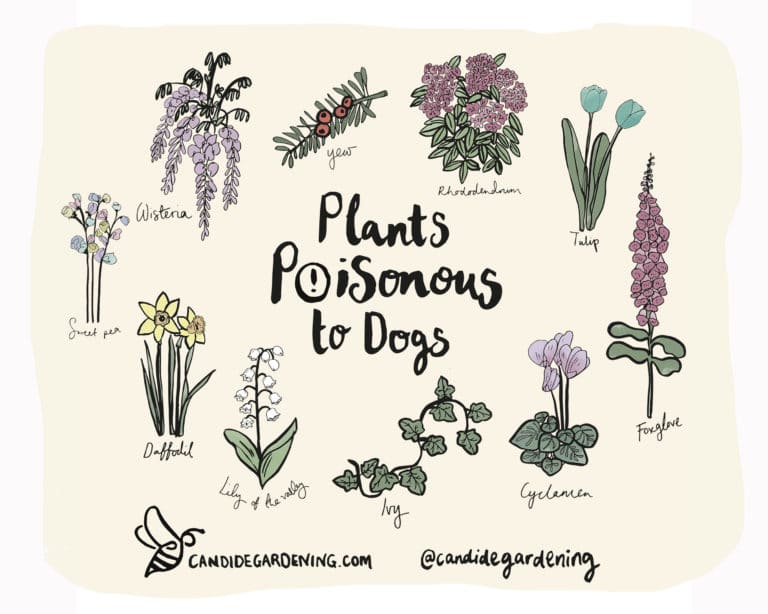
So, it’s never too early to start familiarizing yourself with the potentially lethal plants in order to keep your pets out of harm’s way in the upcoming spring and summer months. And if you have any questions or concerns pertaining to your pet’s health, always ask your vet.
Here Are 10 Flowers That Can Pose Problems For Pets
LILIES
There are several species of lilies that are poisonous to both cats and dogs, and they include the Peace, Peruvian, and Calla.
According to the Pet Poison Hotline, oxalate crystals in the flowers can cause irritation in the mouth, tongue, and throat – typically resulting in excessive drooling.
True lilies, such as the Asiatic, Day, Easter, Tiger, and Japanese Show lilies are much more toxic to animals. Ingesting a few petals can result in kidney failure.
Like any other health concern, the Pet Poison Hotline recommends that any animals who’ve eaten or are believed to have eaten lilies should immediately go to the vet. Also, it may prove helpful to induce vomiting as that may help get rid of the poison.
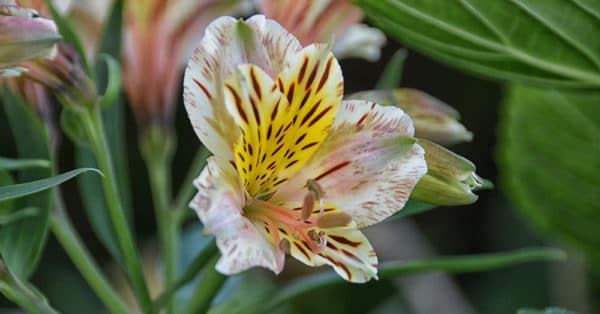
Many kinds of lilies, including these Japanese Show lilies, are poisonous to animals.
LILY OF THE VALLEY
These are often found in wooded areas. The Lily of the Valley has small white bells which are pretty to look at and smell incredible, but they are actually quite deadly to animals and small children who ingest them – yes, you have to watch your kids around these too!
It’s not just the flowers that are poisonous – the whole entire plant is toxic. Gardening Know How reports that Lily of the Valley is full of glycosides, which can interfere with the heart’s ability to pump blood.
Common symptoms of Lily of the Valley poisoning are stomach pains, blurred vision, irregular pulse, sometimes even vomiting or diarrhea and in the worst cases, seizures and death.
If you have these plants in your yard, it may be best to get rid of them or keep them securely fenced in.
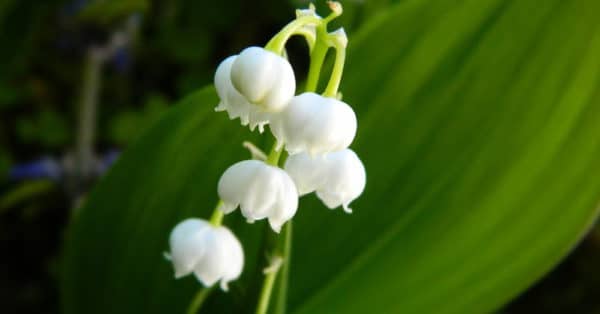
Lily of the Valley is extremely poisonous to animals and children.
DIEFFENBACHIA
The large, stippled green leaves of the dieffenbachia look great in terrariums and such, but they’re quite poisonous to both cats and dogs.
According to the American Society for the Prevention of Cruelty to Animals, all varieties of Dieffenbachia contain insoluble calcium oxalates, in addition to proteolytic enzymes, and can cause intense burning and irritation of the mouth, tongue, and lips, excessive drooling, vomiting, and difficulty swallowing.
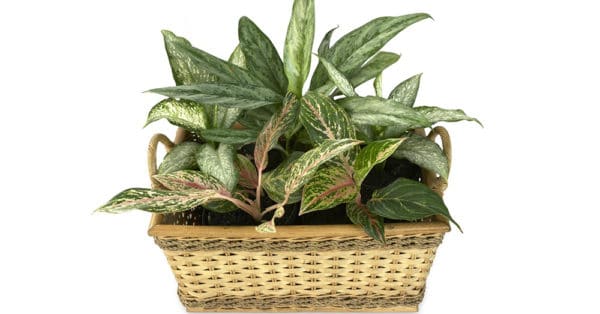
Dieffenbachia is a popular decorative plant, but its leaves contain toxic substances.
TULIPS AND HYACINTHS
While tulips might be one of the world’s most popular flowers, they’re incredibly toxic to dogs and cats.
According to Entirely Pets, symptoms of tulip ingestion include intense vomiting, depression, diarrhea, hypersalivation, drooling and lack of appetite. Hyacinth is very much the same.
The poisonous substances in both tulips and hyacinths are concentrated in the bulb, which poses the most danger to animals who like to dig – therefore both plants should be kept away from free-roaming pets.
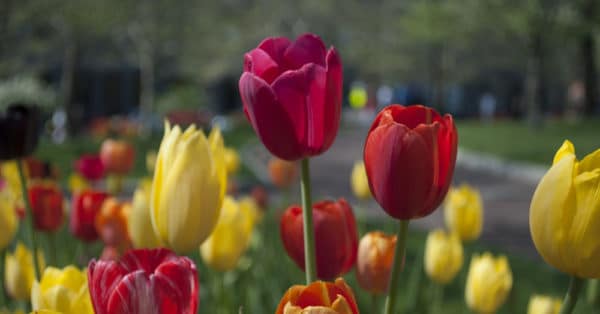
Tulips are popular flowering plants in the spring.
SAGO PALM
While this plant isn’t found in the northern United States, Sago palms are very popular in the south. They also happen to be very dangerous for pets.
Sago palm also goes by other names like coontie palms, cardboard palms, cycads, or zymias, but they all contain cycasin, something that is incredibly harmful to the liver.
The leaves of the short and squat Sago are typically not out of range of a wandering animal, who may want to chew a bit greenery. And as PetMD reports, just a little nibble is all it takes to prompt vomiting, bloody stools, urinary issues, and internal bruising, and in some very serious cases, seizures, paralysis, coma, and death can occur.
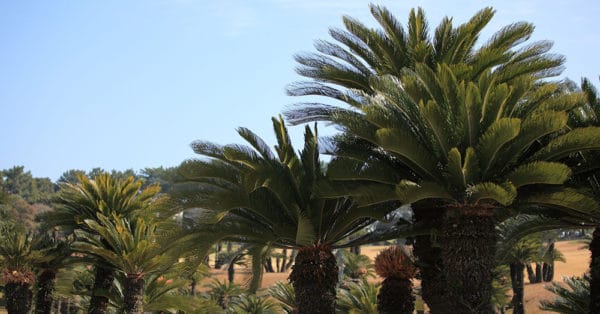
Sago palm leaves are extremely toxic.
AZALEA AND RHODODENDRON
According to Poison.org, animals that nibble a few azalea or rhododendron leaves won’t feel a whole lot of discomfort, however, those who ingest large parts of the plant could start vomiting and go into toxic shock.
And it turns out, that honey made from bees who frequent azalea and rhododendron plants can be just as dangerous! “Mad honey,” as it was once referred to by people of ancient Turkey, would often fend off their enemies by feeding it to invading Romans, as it can cause confusion and vomiting – sometimes even death.
And it’s not just the pets you have to watch out for, it’s your kids as well. Children have even gotten poisoned by these plants at home if they ingest the flowers or their nectar.
Poison control centers have even noted an increase in such cases every spring.

Azaleas and Rhododendron flowers are toxic to animals.
DAFFODILS
While these bright yellow flowers are always a welcomed sign that spring is in the air, they’re pretty bad for your pets. According to the Pet Poison Hotline, daffodils, like tulips and hyacinths, contain strong alkaline substances that can cause vomiting, diarrhea, abdominal pain, and even cardiac arrhythmia.
Also, just like with tulips, hyacinths, or any other poisonous plants, always contact your veterinarian immediately if your animal has ingested daffodils, or if you suspect they may have.
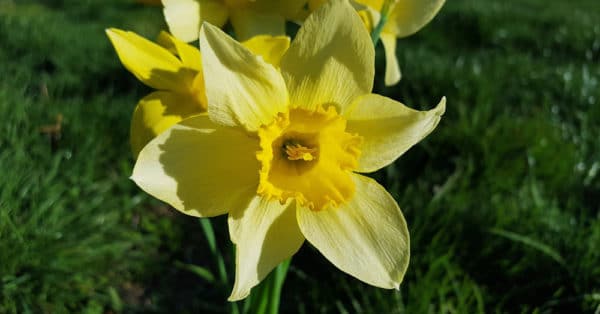
Daffodils are poisonous to cats and dogs.
CROCUS
There are two kinds of crocus. The spring crocuses, can cause vomiting and diarrhea. While the late blooming crocuses, also known as meadow saffron, autumn crocus, naked ladies, naked boy, or son-before-the-father, are much worse.
Late blooming crocuses, according to the Poison Garden, can prompt renal failure – even in humans who ingest the plant.
The substance found in the crocus, colchicine, was once used as a treatment for gout. However, an overdose can cause cholera-like symptoms plus a slow, agonizing death. The FDA has since banned companies from marketing any drugs containing colchicine.
It’s best to keep both your pets and children away from the autumn crocus.
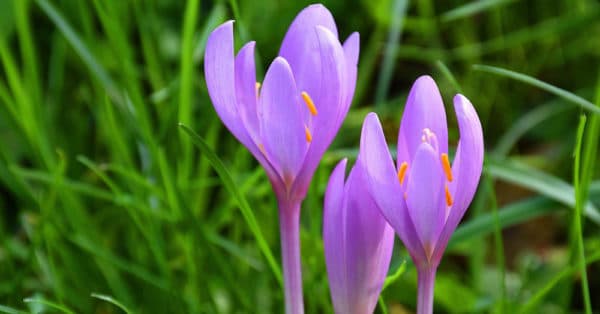
The flowers of the beautiful crocus are also quite deadly.
OLEANDER
Oleander can be found growing along roadsides in both the southern and western United States, as well as in backyards and gardens across the country. The flowering plant is a popular one for decoration, yet it’s one of the most deadly.
According to Wag Walking, all parts of the oleander plant are poisonous, including the seeds, fruit, nectar, and sap – however, the toxins are most concentrated in the stem. Even standing water near where oleander grows can be turn out to be poisonous.
The potency of several oleander leaves are enough to kill a horse. In popular literature, folk songs, and film, the plant is described as an effective poison – because it is. That is why any person or animal who has ingested oleander will quickly start to experience an increased heart rate and diarrhea, and medical attention should be sought immediately.
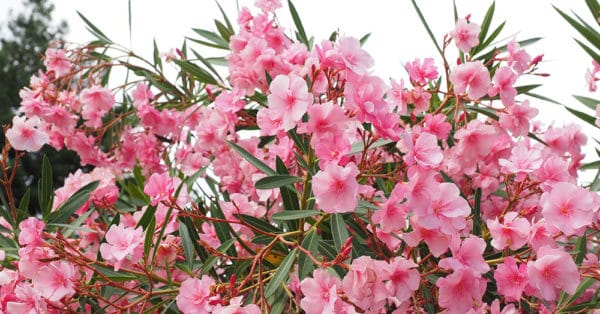
Oleander is incredibly poisonous to humans and animals alike.
KALANCHOE
Kalanchoe is native to South Africa and Australia, however, it is used as a decorative plant around the world. it blooms during the summer months and unfortunately, the glycoside compounds found within the plant can become concentrated in the bright flowers, that it ends up attracting hungry animals who sadly end up poisoning themselves.
As DVM reports, several grams of the Kalanchoe have been enough to kill a small calf that is out grazing. While it is not common to North American farmland, having the plant indoors can still have the same deadly effect on cats and dogs.
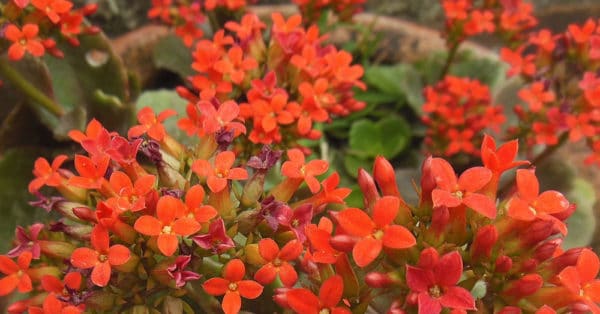
Kalanchoe is native to South Africa and Australia, but kept worldwide as a decorative plant.


